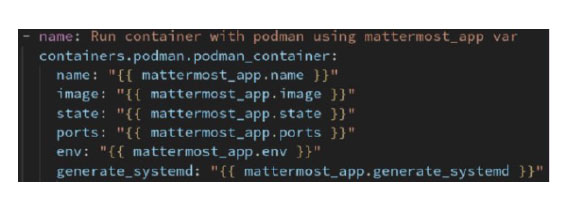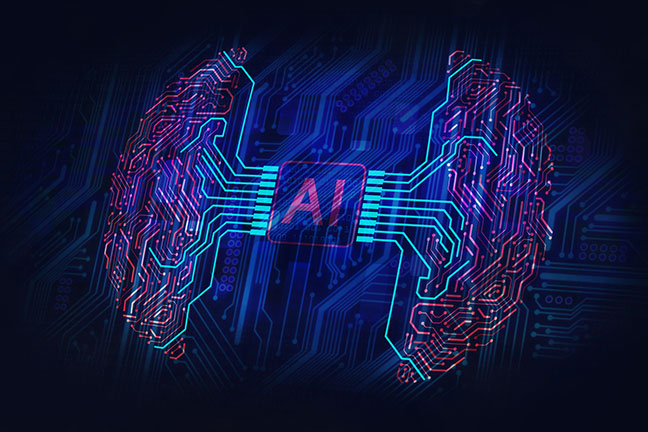Systems Engineer
At AnsibleFest last year, Red Hat and IBM Research announced “Project Wisdom”. Dr. Ruchir Puri from IBM Research explained the problem that they were trying to solve: The people who could benefit most from Automation lacked the skills to take advantage of the technology.
IBM Research worked on building an AI solution that could be used by the very people who would benefit from the technology. And a solution that wouldn’t be a “Jack of All Trades, Master of None”, but instead would be a master at Ansible, propelling IT automation.
Even last October, when this was first announced, it was exciting news. The live demonstration during that keynote was impressive. By simply entering the name of a task (Ansible Playbooks are broken down by tasks and each task has a name written in plain language) in English, Project Wisdom would suggest the code for the entire task.
Well, here we are 7 months later and it’s even more impressive. In addition, Red Hat has rebranded the solution as “Ansible LightSpeed” (you’ll note that the link still refers to “Project Wisdom”) which is supported by IBM’s Watson Code Assistant and works as part of the Ansible Extension for VS Code.
Generative AI & Trust
Now for the differences… At this point we’re all familiar with generative AI (for example, Chat-GPT, Microsoft’s Bing chat bot, and GitHub Co-Pilot). Many of us have also noticed the potential negative impacts of generative AI – Artists, for example, have protested AI training on their work. Their concerns (and, yes, this is relevant) come from generative AI applications using their work to train the models, but when the AI creates something based on their work, they receive neither credit nor payment. Case in point is the Writer’s Guild of America who is currently striking over a labor dispute including AI usage. The Writer’s Guild is trying to protect their members from generative AI training on their members’ work and creating new works without credit or payment.
You’re probably wondering “Why is he going off on this tangent? What does this have to do with anything when it comes to Ansible?”. Well, the answer is actually very close to the heart of the Open-Source movement.
From its inception, Open-Source has been about contributions from the community. These contributions may have the backing of a business, or they may be created by an individual in their own free time. But the basic concept is the same, they are contributing to the community and the community sees to it that they are properly credited.
That’s one part of why attribution is important. We want to make sure that when code is used by generative AI it is understood where it was sourced and appropriate credit is given.
The other value of attribution is tied into a term that was mentioned several times at AnsibleFest and Red Hat Summit: Trusted Software Supply Chain. This term ties into other things that were announced but, in this case, we also know that the sources of code can be trusted and aren’t going to introduce known vulnerabilities into your environment.
Finally, attribution allows you to decide if you want to use a given source or not, allowing the end users to make determinations about works for them from this perspective.
In his presentation this year, Dr. Puri said, “Trust of generative AI is fundamental to its success.” And that means trust in all parts – the attribution, the trusted software supply chain, and the ability to decide if a source is appropriate for your use.
Ansible Lightspeed in your Environment
So, what does this mean for your data center? How can you take advantage of Ansible Lightspeed?
Recently, I was at a customer meeting when I saw an old colleague from IBM. The meeting was focused on Ansible but he said (I’m paraphrasing) that he was told that he didn’t need to learn how to use Ansible.
At that point, not even realizing how close Lightspeed was to launching, I told him that he wouldn’t necessarily need to learn Ansible because of Project Wisdom. With this announcement new Ansible users like him will not need to spend as much of their time figuring out which modules to use to perform a function and what values are needed. Users will be able to create content to automate their systems by continuing to focus on their domain specific knowledge rather than having to be an expert on everything in Ansible.
When you put Ansible Lightspeed into place, the most important action is being able to explain what a given task needs to do. Consider this:
In a lab environment, all that I had to do was type the following:
– name: Run container in podman using mattermost_app_var
When I hit enter, it generated code understanding that I wanted to use Podman to run the containerized application, but that I also wanted to use the variable named mattermost_app. You can see the output here and it’s quite detailed:

Legacy Environments – Bridging the Skills Gap
Many businesses are spinning up “modernization” initiatives of their legacy systems and apps to take advantage of the benefits of hybrid cloud and IT automation. Legacy systems technologists, such as Mainframe developers, can now more easily join your Ansible environment without having to learn a new skill. But their domain specific knowledge of z/OS is just as relevant as ever (possibly even more so as it opens the mainframe for other users to run Ansible playbooks).
Check out the z/OS and Ansible demo using IBM Watson Code Assistant.
Where do we go from here?
This is still a work in progress. But the progress has been incredible so far. At this point Ansible Lightspeed is providing code suggestions and looking for code sources. In the future, you can expect Ansible Lightspeed to optimize the code that it creates with you and to help explain what the code is doing – because who doesn’t love documenting their code?
In the short term, I’d suggest getting your Ansible Automation Platform Environment set up, downloading VS Code and the Ansible Extension for VS Code, and making sure that your (required) GitHub account is ready to go so that you’re ready when the Technology Preview is released.
More Information
Mainline, is a Red Hat Premier partner, the highest partner level in the Red Hat Solution Provider program, delivering infrastructure software and automation solutions to enterprises across the United States and Puerto Rico. To explore how Ansible could be used in your environment, please reach out to me or to your Account Executive or contact us here.
You may be interested in:
VIDEO: Red Hat Ansible Automation Platform 2.x (10:13)

